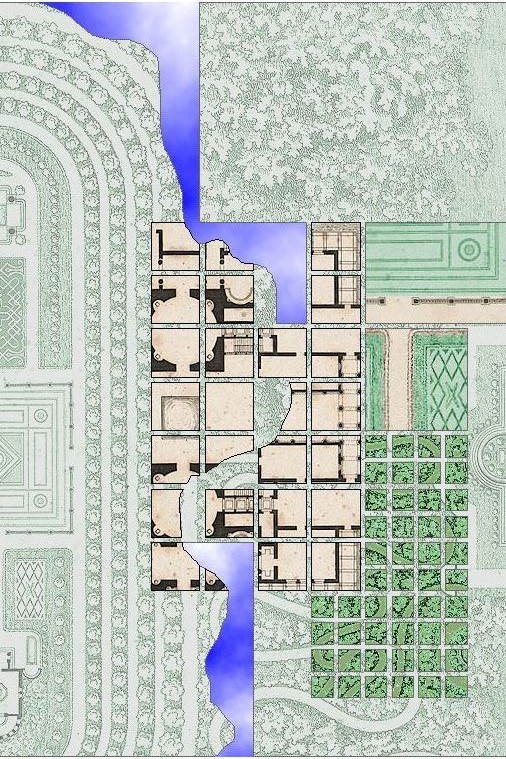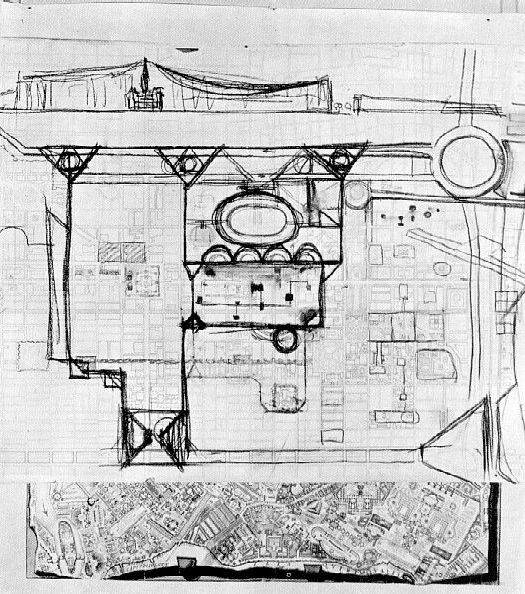2016.01.21 13:58
Scott Merrill wins the 2016 Driehaus Prize

duplication, imitation, mimicry, novelty, classical, modern style
| |
2016.02.10 10:23
Anyone else see this as a blatant rip-off of Aqua Tower?
"a slow refinement of a given set of forms" is not the only definition a tradition. The ongoing changing of standards is an even more prevalent tradition. At least that's what I've seen most in the last 60 years.
In architecture, traditional is now a style more than anything else. An ongoing repetition of a set of forms that were refined long ago.
2016.03.11 11:39
Can you help me describe this building in Prague?

The style is Neorennaissance.
You might want to look through Kurt Milde's Neorennaissance in der deutchen Architektur des 19. Jahrhundrerts.
2016.08.24 17:13
Cuteness and the fight for architectural preservation
Regarding strategy, again, I think it's good to remember that ephemerality can actually be nothing but ephemeral.
When exactly did architects fill the role of leader and teacher in the community on matters related to space, lifestyle, urban culture etc.? Have architects ever even been trained to be leaders and teachers in the community on matters related to space, lifestyle, urban culture etc.? Don't tell me cuteness and wishful thinking are the same thing.
And companies that want to sell products or real estate to the public, like computer, furniture or car companies, do not put a lot of effort in trying to "educate" the consumer, they advertise, i.e., put a lot of effort/money into fabricating consumer need/desire.
Does the public really need/desire architects to fill the role of leader and teacher in the community on matters related to space, lifestyle, urban culture etc.? I seriously doubt it.
2016.09.20 12:13
20 September
Whatever he was writing about--Rome in the 15th century, Venice in the 16th century, Piranesi in the 18th century--he was always looking for a battle. If there were two powers he was happy, because the notion of the dialectic was preserved. It was always the opposition between one and another, like Borromini and Bernini. When he was trying to write about an event, he tended to look not so much for a good guy or a bad guy, as for a red and a green, or a black and a white. In a way, then, Tafuri was interested in history because in it he could discover an opposition of characters, a clash of interests, or a war between social groups. It made, by the way, for very good writing. Up to a certain point, by shifting the attention onto this as against that, he could himself create the plot; that of a conflict in the Venice of the 16th century between families, parties, groups, interests. Today we are probably more aware of the meaninglessness of the chain of events, of the effect of chance on history, that time per se doesn't have any more meaning than the one we attribute to it. I often feel we are in this kind of chance-filled period nowadays…
Georges Teyssot, 1999
More directly, the shapes used by Kahn can be found not only in Choisy but also infinitely repeated in the composite photostat of Giovanni Battista Piranesi's map of Rome, drawn by him for his book on the Campus Martius, probably of 1762, which now hangs in front of Kahn's desk.
Vincent Scully, Jr., Louis I. Kahn (New York: George Braziller, Inc., 1962). p. 37.

Viaduct architecture for Philadelphia, Pennsylvania. 1962. Louis I. Kahn. Plan drawn over Piranesi's plan of the Campus Martius.
Did Kahn first see the Ichnographia Campus Martius within Hegemann/Peets' Civic Art?
Is it indeed the Ichnographia Campus Martius that is behind the change (of style/plan) from Kahn's 1956-57 Civic Forum to 1961-62 Market Street East?
| |
2016.09.25 11:36
Thread Central
Regarding "cartoon style" or "comic style" check out dossier: architectural otherness -- a survey of "other type" images featured at Quondam from 1982 to the present.
for example:

2015.04.22
|